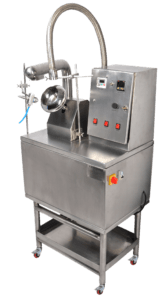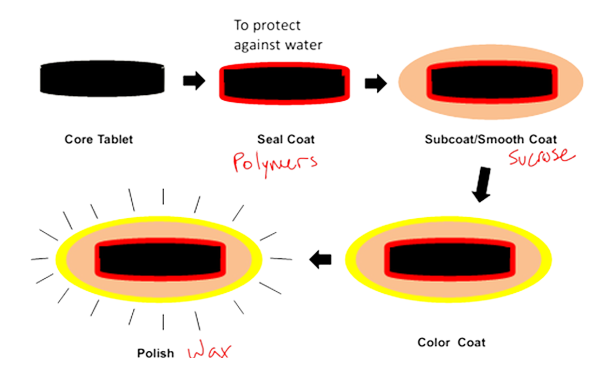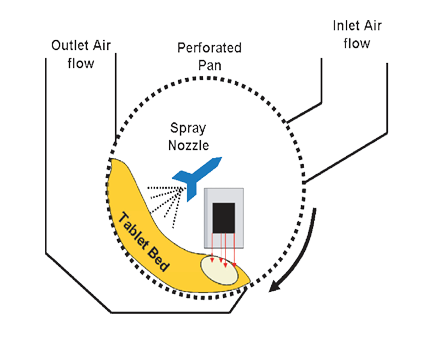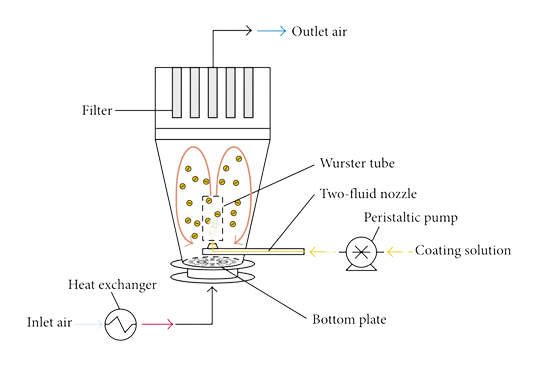
Unlocking the Secrets of R&D COATER (Tablet Coating Machine): A Comprehensive Guide
Principles of Tablet Coating
Tablet coating serves several essential purposes in the pharmaceutical industry:
- Masking the Taste: Coating helps mask the often unpleasant taste of certain drugs, making them more palatable for patients.
- Masking Odor and Color: Some drugs have distinctive odors and colors that are masked by the coating to improve the overall appearance and smell of the tablets.
- Physical and Chemical Protection: Coatings provide a protective layer that shields the drug from external factors, ensuring the tablet’s physical and chemical stability.
- Controlled Release: Coatings can control the release of the drug from the tablet, ensuring a specific release profile, which is crucial for some medications.
- Protection in the Gastric Environment: Coating also protects the drug from the harsh gastric environment, ensuring it reaches its intended site of action intact.
Coating Process
Tablet coating involves applying a coating composition to a moving tablet bed with the use of heated air to facilitate solvent evaporation. There are two primary coating processes:
1. Sugar Coating

This process involves several steps:
- Sealing: A seal coat is applied to prevent moisture penetration into the tablet core, preserving the tablet’s integrity.
- Sub Coating: Sub coating rounds the edges and increases tablet size. This step can increase the tablet’s weight by 50-100%.
- Smoothing: This step covers imperfections on the tablet surface and imparts the desired color.
- Color Coating: Color coating ensures an elegant and uniform appearance.
- Polishing: Tablets can be polished in a standard coating pan to achieve the desired luster.
- Printing: Tablets are often printed with pharmaceutical-grade ink for identification purposes.
2. Film Coating

Film coating adds 2-5% to the tablet’s weight and can be done using two methods: pan pour and pan spray.
- Pan Pour Method: In this method, viscous coating materials are poured directly onto a rotating pan, followed by alternating solution application, mixing, and drying. However, it can be relatively slow and relies heavily on the operator’s skills.
- Pan Spray Method: Coating material is sprayed onto the tablet bed from a nozzle, and hot air is used to dry it. Factors like pan design, pan speed, spray variables, and process air variables must be carefully controlled.
Equipment Used in Tablet Coating
Three main types of equipment are employed in tablet coating:
- Standard Coating Pan: It consists of a circular metal pan rotated on its horizontal axis. Heated air is directed into the pan, and coating solutions are sprayed onto the rotating tablet bed.
- Perforated Coating Pan: This pan consists of a perforated drum enclosed in a housing. Drying air is directed into the drum, passed through the tablet bed, and through perforations in the drum. It is commonly used in advanced systems like the Hi-Coater.
- Fluidized Bed Coating:

This highly efficient system uses upward-flowing air to fluidize the tablet mass. Coating solutions are applied from spray nozzles located at the bottom of the chamber.
Particle Coating
In addition to conventional tablet coating, there is a technique called particle coating. This involves altering the surface properties and functionality of fine particles or powders. The main reasons for particle coating include modifying drug release profiles, improving appearance, facilitating identification, masking taste and odor, protecting the core from environmental factors, and enhancing product handling.
Types of Particle Coating
There are two primary types of particle coating:
- Wet Particle Coating (WPC):

This method involves dissolving excipients, polymers, and pigments in an appropriate solvent and spraying the solution onto dosage forms. It can be performed in a rotary pan coater or a fluidized bed coater.
- Dry Particle Coating: Dry particle coating involves applying a dry and smooth film to the particles without using a liquid solution.
In summary, tablet coating is a crucial process in pharmaceutical manufacturing that serves various purposes to enhance the quality and effectiveness of medications. Understanding the principles, processes, and equipment used in tablet coating is essential for producing high-quality pharmaceutical products.
MICROENCAPSULATION PROCESSES AND THEIR APPLICATIONS
| Process | Applicable Core Material | Approx. Particle Size (µm) |
|---|---|---|
| Air Suspension | Solids | 35-5000 |
| Coacervation Phase Separation | Solids & Liquids | 2-5000 |
| Multi Orifice Centrifugal | Solids & Liquids | 1-5000 |
| Pan Coating | Solids | 600-5000 |
| Solvent Evaporation | Solids & Liquids | 5-5000 |
| Spray Drying and Congealing | Solids & Liquids | 600-5000 |
